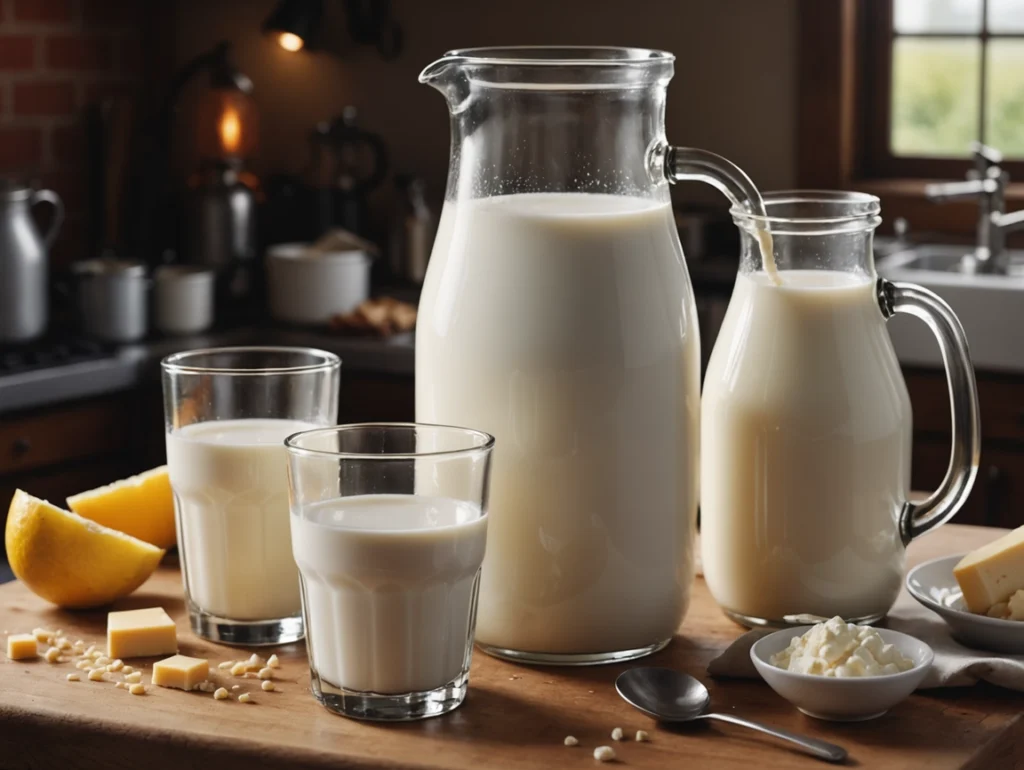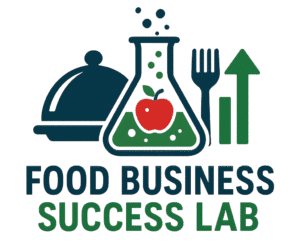How It’s Made: From Fresh Milk to Thick Golden Sweetness

🥛 How It’s Made:
If you’ve ever opened a tin of condensed milk, you know that feeling — the creamy golden texture, the rich aroma, and the sweet milky taste that instantly reminds you of desserts, coffee, or childhood treats. But behind that thick golden sweetness lies a fascinating process of transformation — where simple fresh milk turns into a long-lasting, high-value dairy product loved across the world.
In this article, we’ll explore what condensed milk actually is, how it’s made, its many kitchen and commercial uses, its health benefits (and concerns), and how modern consumers are reinventing it into a healthier indulgence.
🧈 What Exactly Is Condensed Milk?
Condensed milk is simply cow’s milk with about 60% of its water removed. When sugar is added, it becomes sweetened condensed milk, known for its dense, caramel-like flavor and creamy texture. Without sugar, the same process yields evaporated milk.
This product was originally created to preserve milk without refrigeration, long before fridges were common. Today, it remains a global staple for its rich taste, convenience, and incredible versatility in both home and professional kitchens.
🏭 The Process: Turning Fresh Milk into Golden Sweetness
1. Collection and Standardization
Production begins with fresh, high-quality cow’s milk. It’s tested for purity, fat content, and solid levels. Depending on the brand’s recipe, the milk is “standardized” — adjusted to the right fat and solid ratios to achieve consistent flavor and texture.
2. Preheating
The milk is heated to about 85–90°C for several minutes. This step destroys bacteria and enzymes, ensuring safety and extending shelf life. It also improves viscosity (thickness) during the later stages.
3. Evaporation Under Vacuum
This is the heart of the process. The preheated milk is passed through a vacuum evaporator, where water is gently removed at lower boiling temperatures (thanks to the vacuum). This prevents burning and preserves the milk’s creamy taste.
As water evaporates, the milk thickens into a rich, syrupy liquid. About 60% of the original water is removed here.
4. Adding Sugar
Once thickened, sugar (about 40–45% of the final weight) is added. The sugar doesn’t just sweeten the milk — it also acts as a natural preservative, preventing microbial growth and extending shelf life.
5. Cooling and Crystallization
The sweetened milk is then cooled while stirring to control lactose crystallization. This ensures a smooth, creamy texture instead of a grainy one.
6. Packaging
Finally, the condensed milk is filled into sterilized cans, jars, or pouches, sealed, and stored at room temperature. Properly made condensed milk can last up to two years without refrigeration — an impressive feat of dairy science.
📜 A Short History: From Survival to Sweetness
Condensed milk was invented in the mid-19th century by American inventor Gail Borden. During the U.S. Civil War, it became essential military food — a safe, non-perishable milk source for soldiers.
After the war, it entered the civilian market and quickly found its way into home kitchens. In tropical countries without refrigeration, it became a symbol of convenience and reliability.
By the early 20th century, brands like Nestlé and Eagle Brand popularized it worldwide. In Asia, condensed milk became an everyday ingredient for tea, coffee, and desserts — a cultural legacy that still continues.
🍰 Kitchen Magic: How Condensed Milk Transformed Cooking
Condensed milk is one of those rare ingredients that can instantly turn simple recipes into something luxurious.
🌿 In Home Kitchens
- Desserts: Used in pies, puddings, custards, and fudge. It gives body, shine, and sweetness.
- Beverages: A star ingredient in Vietnamese iced coffee, Thai tea, and Indian cold coffee.
- Breakfasts & Bakes: Drizzled over pancakes, waffles, and fruit bowls.
- Asian Sweets: Widely used in barfi, halwa, kheer, rabri, and sandesh.
- Ice Creams & Confectionery: Helps maintain creamy texture without ice crystals.
🍳 In Professional & Commercial Kitchens
- Bakeries use it as a binding agent and flavor enhancer.
- Hotels and cafes rely on it for consistent coffee and dessert quality.
- Ice cream factories use condensed milk for caramel and toffee flavors.
- Catering services prefer it for its shelf life and easy storage.
In essence, condensed milk connects the worlds of culinary art and food engineering — bringing richness to flavors while simplifying recipes.
🩺 Health Benefits (and Cautions)
Condensed milk offers a range of nutritional advantages when consumed in moderation.
💪 Nutritional Highlights (per 100g)
| Nutrient | Amount |
|---|---|
| Energy | 320–330 kcal |
| Protein | 8–9 g |
| Fat | 8–9 g |
| Carbohydrates | 54–56 g |
| Calcium | 280–300 mg |
| Sugar | 40–45 g |
✅ Benefits:
- Energy Booster: High-calorie content makes it perfect for growing children or athletes.
- Bone Health: Rich in calcium and milk proteins.
- Nutrient Retention: Maintains much of milk’s original vitamins like A, D, and B12.
- Shelf Stability: A safe dairy option in regions lacking refrigeration.
⚠️ Health Cautions:
- High sugar content: Not suitable for diabetics or low-calorie diets.
- High calorie density: Overconsumption may lead to weight gain.
- Not for infants: Despite its milk content, it lacks the nutrients needed for baby formula.
🥗 How to Make Condensed Milk Healthier
Today’s consumers are more health-conscious, and that’s changing the way condensed milk is made and used. Here are a few ways to make it a better choice:
1. Low-Sugar or Sugar-Free Variants
Many brands now offer reduced-sugar condensed milk, sweetened with natural substitutes like stevia or monk fruit.
2. Plant-Based Versions
Vegan and lactose-intolerant consumers can enjoy plant-based condensed milks made from coconut, almond, soy, or oat milk. Coconut condensed milk, for example, is rich and creamy — perfect for tropical desserts.
3. Homemade Healthier Versions
You can make your own version at home: simmer milk with a smaller amount of sugar and a pinch of baking soda. It gives a lighter flavor and more control over ingredients.
4. Mindful Portioning
A tablespoon (about 20g) adds flavor without overloading sugar. Use it as a drizzle, not the base.
💼 Business Perspective: Turning Milk into Profit
Condensed milk isn’t just a food — it’s a smart business product. Its long shelf life, easy storage, and wide market demand make it ideal for dairy entrepreneurs.
🔧 Production Scale
Small-scale plants can start with 500–2,000 liters of milk per day, using compact vacuum evaporators and pasteurizers. The key investment is in maintaining consistent quality and hygiene.
🧾 Profit Margins
- Raw milk to condensed milk conversion roughly yields 1 liter of condensed milk from 2.2 liters of milk.
- Profit margins range from 20–40%, depending on scale and sugar cost.
🏷️ Target Markets
- Bakeries and confectioneries
- Hotels, cafés, and dessert shops
- Retail and supermarkets
- Export buyers in Asia, Africa, and the Middle East
📈 Product Diversification
Entrepreneurs can expand into:
- Flavored condensed milk (caramel, chocolate, coffee)
- Plant-based condensed milk (vegan market)
- Ready dessert bases and fillings
Condensed milk is also a value-added dairy product — it increases the profitability of milk, especially in rural dairy economies.
🌍 Global Market Overview
The global condensed milk market was valued at approximately USD 4.5 billion in 2024, with an expected CAGR of 4–5% from 2025 to 2030.
Top Producing Countries
- India: Amul, Nestlé India, Britannia
- Vietnam: Vinamilk
- Thailand: Dutch Mill
- USA: Eagle Brand, Carnation
- Brazil & Netherlands: Major exporters to Africa and the Middle East
Global Demand Drivers
- Growth in dessert and bakery industries
- Urban lifestyles needing long-lasting dairy products
- Café culture expansion in Asia
- Export demand in tropical and developing countries
Market Segments (Approx. Share)
| Segment | Share |
|---|---|
| Sweetened Condensed Milk | 70% |
| Unsweetened (Evaporated Milk) | 30% |
| Bakery & Confectionery Use | 45% |
| Household Retail | 30% |
| Food Service Industry | 25% |
🌏 Popularity Across Cultures
Condensed milk has become a cultural ingredient around the world:
- Asia: Used in Indian sweets, Thai tea, and Malaysian teh tarik.
- Latin America: Central to dulce de leche, flan, and tres leches cake.
- Europe: Loved in pastries and puddings.
- Africa: A convenient milk alternative in tea and breakfast dishes.
- USA: A must-have for pies, fudge, and baked goods.
It’s one of those rare foods that bridge cultures and generations, carrying both nostalgia and innovation.
🔮 Future Trends and Innovations
The future of condensed milk looks both sweet and smart:
- Organic and clean-label production – chemical-free, farm-fresh ingredients.
- Sustainable packaging – recyclable pouches instead of cans.
- Digital branding and e-commerce – small dairy producers reaching global markets online.
- Functional versions – fortified with vitamins or probiotics.
As consumers move toward healthier indulgence, condensed milk brands are evolving from just “sweetness in a can” to “smart dairy desserts.”
🏁 Conclusion: Why Condensed Milk Still Matters
From war camps to modern cafés, condensed milk has traveled a long, creamy journey. It’s not just a dessert ingredient — it’s a symbol of preservation, innovation, and cultural connection.
It teaches us how food technology and human creativity can turn something as simple as milk into a product that feeds, inspires, and sustains millions worldwide.
Whether you use it to make your favorite barfi, drizzle it on fruit salad, or stir it into coffee, remember: every spoonful of condensed milk carries a story — of milk transformed into golden sweetness.
